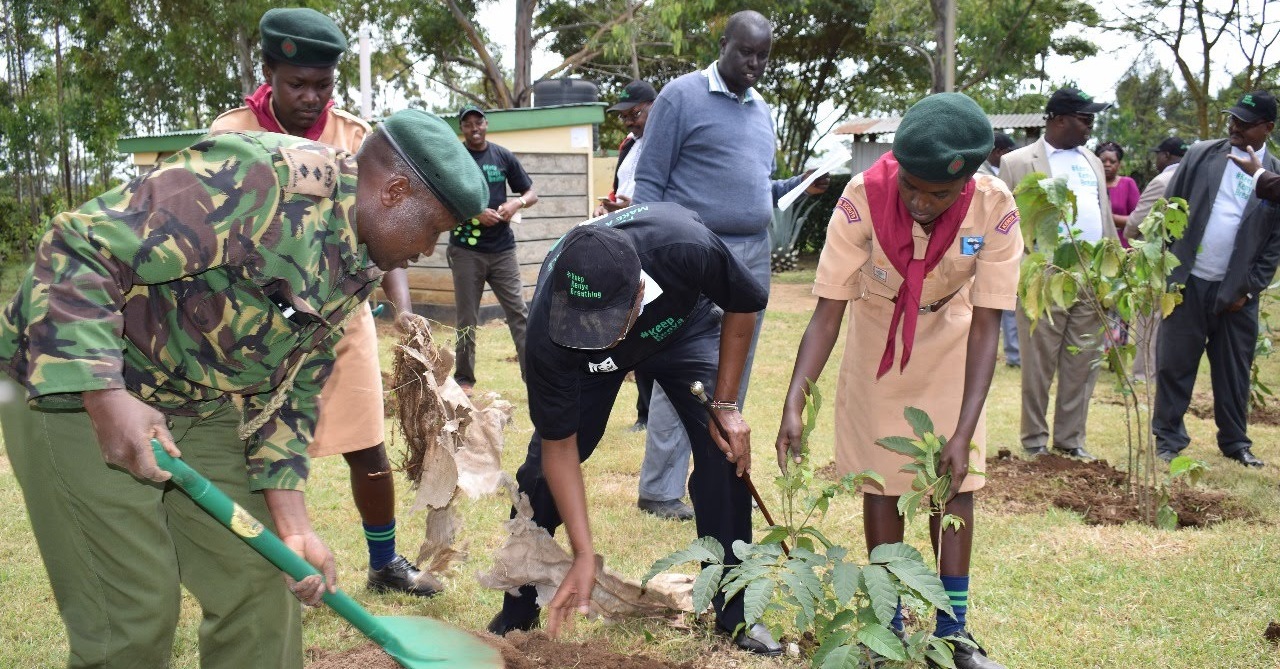
Environment, Water, Energy, Natural Resources and Climate Change
Background Information
The Department of Environment, Energy, Water and Natural Resources is responsible for the conservation and protection of natural resources in Narok County. The department does this through promoting environmental best practices and increasing access to renewable energy.
The Department is also responsible for the formulation and implementation of sector policies and strategies in Environment and Natural Resources and Water and Irrigation and approval of sector plans and projects.
The Department’s vision is to ensure environmental conservation for sustainable development.
The mission of the department is to ensure a harmonized, streamlined and coordinated approach to interventions of the many players and address the necessary cross section issues and enhance sector performance.
- Promoting energy conservation and developing relevant alternative renewable energy technologies such as energy saving jikos stoves, biogas, and solar.
- Training on energy efficiency strategies.
- Sensitize, develop and disseminate appropriate Agro- forestry technologies.
- Increase and improve accessibility of trees seeds/ seedlings in the community.
- Produce and distribute seedlings and seed of appropriate Agro forestry/ wood fuels species.
- Waste management.
- Control of air pollution.
- Controlling noise pollution and other public nuisance and outdoor advertising.
- Issuing license to emit excessive noise and vibrations to business community.
- Regulating noise emission during market days in our town centres.
- Regulating noise emission by religious organisations.
Narok County Grievance Handling Process
Grievance redress requires a systematic approach through which a step-wise procedure is followed and the responsibility for handling is assigned to specific individuals, competent and adequately empowered for the task. These steps are:
Lodging of Complaints:
This is the step where a complaint is made. A complaint can be lodged in an individual’s own name or on behalf of another person. A group, organization or institution can also lodge a complaint. A county should provide designated places or offices or persons where complaints will be lodged.
Ways of lodging a complaint include:
In person (persons with disability will be assisted to lodge the complaints)
Complaints on behalf of persons unable to lodge complaints
Online via email, website, web posting, or a complaints management information system (CMIS) if it is available in the county
Telephone
In writing, including Braille
Text messages
Social media
Any other mode as may be determined by the county
Besides the complaints lodged through the modes stated above, counties are expected to also take up the following complaints:
Own motion matters: this is where a county picks up own motion matters that are relevant to their mandate, for instance issues exposed through the media.
Anonymous complaints: these are complaints presented by people who do not wish to have their identity known. Such a complaint should be treated as a complaint to the county and should be addressed without seeking to know the complainant.
Complaints originating from reports, including social audits: this ought to be addressed and feedback given to the public.
Pertinent issues in handling complaints at this stage:
Complaints received must be recorded in a register.
All complaints that are not in writing, shall be recorded in writing by the receiving officer.
All complaints received must be acknowledged appropriately within seven days.
A county shall not charge any fee for lodging /receiving and determination of complaints unless expressly permitted to do so by law.
Receipt and Acknowledgement of Complaints:
Upon receipt of a complaint, the complaint handling officer shall assign it a reference number, which should be made known to the complainant for tracking purposes.
Documentation of the Complaint:
For every complaint received, a record comprising of the following particulars shall be made: name, address, contacts, next of kin, age, gender, county, reference number of relevant file or matter (if any), the nature of the complaint (what, who, when, where etc.), parties involved, relevant dates and action taken. Where necessary, accompanying documents must be recorded and indexed.
Each county will be expected to establish a database of complaints containing particulars of the complainant, the nature of the complaint, parties involved, relevant dates, action taken and any other details related to the specific complaint. All documents relating to complaints shall be kept in safe custody and a record of the chain of custody shall be maintained. Complaints records shall be maintained for at least six years as required by law.
Assessing the Complaint:
An initial assessment of the nature and gravity of the complaint shall be made by the receiving or front office officer to allow for categorization into minor, moderate and major. This should be followed by prioritization to avoid the lumping together of simple, easy-to-resolve complaints with complex time-consuming ones. It also
allows an effective allocation of complaints to the most relevant officers, leading to faster processing and resolution of the matter.
Complaints should also have assessed for admissibility. Admissibility refers to the fact of being considered whether satisfactory. This involves the review of complaints to determine whether they are within the mandate (functions, conduct, services) of the county. Other factors that may be considered to determine admissibility would be: whether a complaint is already being handled by another competent institution, e.g. the courts; and, the period within which a complaint is lodged, based on the timelines that may be determined by the county.
Action:
When the process for determining admissibility is completed, a file will be allocated to an action officer or referred to the relevant body or institution if not within the functions of the county. An inquiry into the complaint will then be conducted to verify the facts and other details of the complaint before action is taken. At this stage, the respondent should be contacted to give a response to the lodged complaint.
Investigation: Where investigation is required, it should be properly planned for with a clear indication of the time and resources required. The planning should clearly establish what is to be investigated, what evidence will be gathered, who is to be interviewed, documents to be recovered, the expectations of the complainant and also whether the complaint has special considerations to be taken into account — issues such as the security of the complaint, confidentiality, or available evidence that should be dealt with at the planning stage.
The investigation should be for the purposes of establishing the facts and exploring options for resolution. The investigation itself should be carried out in an impartial manner. Confidentiality should be maintained and great care taken to ensure that the complainant’s privacy is protected and their safety is not endangered through exposure of his or her identity.
Review/authentication of evidence: Both the complainant and respondent must be treated fairly and given the chance to advance/respond to claims/allegations and/or produce any relevant evidence. The parties shall be given adequate opportunity to be heard before the designated complaints officer. Parties may object to the hearing of their complaints by officer/s that they suspect may be biased against them. All matters shall be handled in a manner that complies with the Constitution and the laws of Kenya.
Responding to/resolving the complaint: Resolving the complaint involves addressing the issue(s) complained about and offering the best possible remedy in the circumstances. The complaint should be handled in an impartial and objective manner. An officer who has any interest in the matter shall disqualify themselves from handling the case. Complex matters may involve mediation, negotiation or conciliation. The complaints handling officer should have an open mind and examine the evidence objectively.
The remedies for addressing the complaints should be clearly set out and the parties should all be aware of the possible solutions. The complaints handling officers should be empowered to provide the remedies at the appropriate levels, i.e. front office. The complainant should be informed of the decision reached and reasons should be given for the decision by the complaints officer. Any decision reached should be communicated within 30 days.
Closing the file:
Once a decision is arrived at, it shall be communicated to the complainant and the respondent and other interested parties. The complaints database shall be updated to reflect the decision made.
Appeal Process:
The complaints mechanism should have an appeal or review provision for those who are dissatisfied with the decision of the complaints officer of first instance. The appeal or review process should be simple and fast. It is important for the action officer to document what they consider to be the root cause of the complaint as a way of preserving knowledge.



